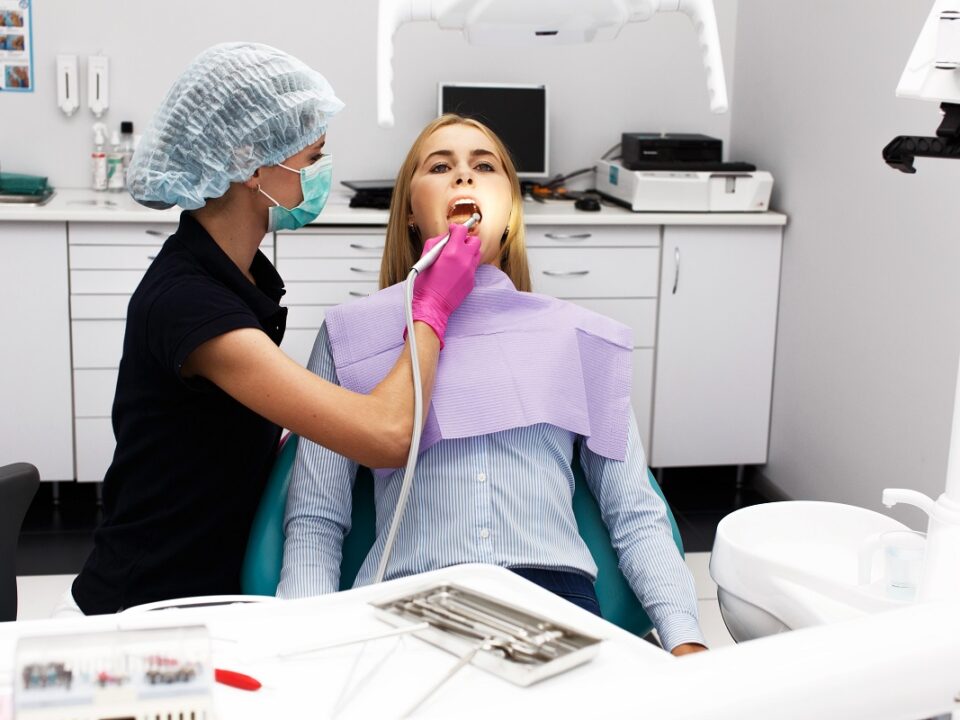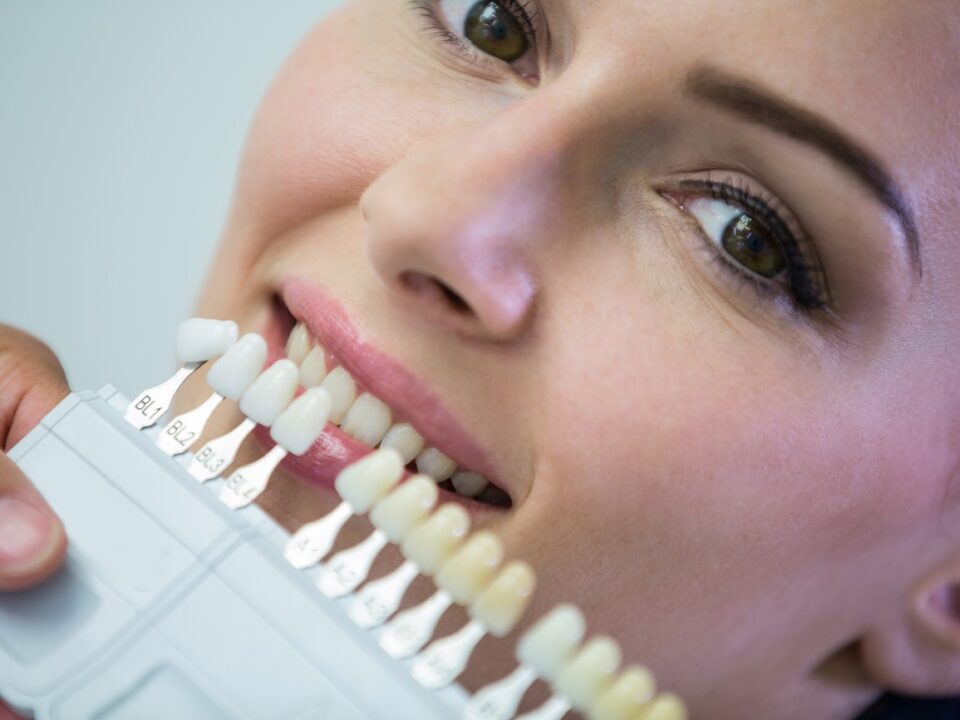
Eating After a Dental Filling: What You Can (and Can’t) Eat and Why It Matters
November 12, 2025TMJ pain: Causes, symptoms, and effective treatments
What is TMJ and why it matters?
TMJ stands for temporomandibular joint, the hinge that connects your jawbone to your skull. You have one on each side of your jaw, and it enables critical movements like chewing, speaking, yawning, and facial expressions. TMJ disorders (often referred to as TMD) occur when something goes wrong with this joint, the surrounding muscles, or ligaments.
While TMJ pain is common, it is often misunderstood or misdiagnosed. Left untreated, it can affect your quality of life — interfering with eating, sleep, speech, and emotional well-being.
Causes of TMJ pain
TMJ pain can stem from multiple sources. Identifying the root cause is key to finding the right treatment. Common causes include:
1. Jaw misalignment
When the upper and lower teeth don’t come together properly, it can put strain on the TMJ over time.
2. Teeth grinding (Bruxism)
Chronic grinding or clenching, often during sleep, puts excess pressure on the jaw joint and surrounding muscles, leading to inflammation and discomfort.
3. Arthritis
Osteoarthritis or rheumatoid arthritis can affect the temporomandibular joint just like other joints in the body, causing stiffness, swelling, and pain.
4. Trauma or injury
A direct hit or accident that impacts the jaw or head can damage the TMJ, leading to long-term complications if not treated promptly.
5. Stress
High stress levels often result in jaw clenching, muscle tension, and changes in posture — all of which can contribute to TMJ dysfunction.
6. Poor posture
Slouching or leaning forward for long periods (such as at a computer) can affect the muscles around the neck and jaw, indirectly aggravating the TMJ.
Common symptoms of TMJ disorders
Recognizing the symptoms of TMJ dysfunction early can prevent further damage. Here are the most common signs:
- Jaw pain or soreness, especially near the ear
- Clicking, popping, or grinding sounds when opening or closing the mouth
- Difficulty opening the mouth fully
- Jaw locking in an open or closed position
- Headaches or migraines
- Earaches or ringing in the ears (tinnitus)
- Facial muscle pain or fatigue
- Pain while chewing or talking
- Swelling on the side of the face
TMJ symptoms may come and go or persist constantly. In some cases, pain can radiate to the neck, shoulders, and upper back.
When to seek help
If you’re experiencing jaw discomfort or other related symptoms for more than a few days, it’s time to consult a dentist or TMJ specialist. Early diagnosis and treatment can prevent further damage and relieve pain effectively.
Effective treatments for TMJ pain
Treatment for TMJ disorders varies based on the severity and underlying cause. Many patients respond well to conservative therapies, while others may require more advanced interventions.
1. Lifestyle and home remedies
- Cold or warm compresses: Help reduce inflammation and relax tense muscles.
- Soft diet: Avoid chewy or hard foods to reduce stress on the joint.
- Jaw exercises: Gentle stretches can improve range of motion and muscle balance.
- Stress management: Techniques like meditation, yoga, and deep breathing can reduce jaw clenching.
2. Dental treatments
- Occlusal splints or night guards: Custom-made devices that prevent teeth grinding and reposition the jaw.
- Bite correction: In some cases, orthodontic treatment may be necessary to align the bite and relieve TMJ stress.
3. Medications
- Anti-inflammatory drugs (NSAIDs): Reduce pain and swelling.
- Muscle relaxants: Helpful in relieving muscle spasms.
- Antidepressants: Sometimes prescribed in low doses to manage chronic pain.
4. Physical therapy
A physical therapist trained in TMJ disorders can guide patients through specialized exercises and posture corrections to relieve symptoms.
5. Minimally invasive procedures
- Botox® injections: Temporarily relax overactive jaw muscles and reduce pain.
- Arthrocentesis: A procedure that flushes the joint to remove debris and relieve inflammation.
6. Surgical options
In rare and severe cases, surgery may be considered:
- Arthroscopy: Inserting a small camera into the joint for diagnosis and treatment.
- Open joint surgery: Required if there are structural abnormalities or damage that cannot be treated by other methods.
TMJ and Mental Health
Chronic TMJ pain can impact your emotional well-being, leading to anxiety, sleep disturbances, or depression. Treating TMJ is not only about managing physical symptoms, but also improving your overall quality of life.
Prevention Tips
- Avoid overuse of the jaw (like chewing gum or biting nails).
- Practice good posture, especially if you sit for long hours.
- Use a night guard if you grind your teeth.
- Stay hydrated and maintain a balanced diet for joint health.
- Don’t ignore jaw pain — early treatment leads to better outcomes.
Conclusion
TMJ pain can be debilitating, but with the right approach, it’s manageable. Whether your discomfort is caused by grinding, stress, or misalignment, various treatments are available to restore comfort and function. If you’re experiencing TMJ symptoms, consult with a dental professional to explore your options and reclaim a pain-free life.




